
What Type of Crossing Allows Pedestrians and Cyclists
Understanding what type of crossing allows pedestrians and cyclists is key to staying safe and following UK road rules. With more people using e-bikes, it’s important to know where cyclists can legally ride alongside pedestrians. This guide explains the crossing that lets both cross together — the toucan crossing — and how it differs from other UK crossings.
Which Type of Crossing Allows Pedestrians and Cyclists?
The toucan crossing is the only type of road crossing in the UK that allows pedestrians and cyclists to cross together. Designed for shared use, it is wider than standard pedestrian crossings—usually around four metres—providing enough space for both users to cross safely and comfortably.
Toucan crossings are easy to identify thanks to their push-button controls and dual traffic lights, which display a green man for pedestrians and a green bicycle symbol for cyclists.
The name “toucan” comes from the phrase “two-can-cross”, highlighting that both cyclists and pedestrians can use the crossing at the same time without cyclists needing to dismount.
You’ll typically find toucan crossings near parks, cycle lanes, and shared-use paths, helping to create safer routes for commuters and leisure riders alike. Unlike zebra, pelican, or puffin crossings, which are pedestrian-only, toucan crossings are specifically built to support both groups sharing the space safely.
Why Toucan Crossings Are Safer for Cyclists and Pedestrians
Toucan crossings make it safer for cyclists and pedestrians to cross busy roads without disrupting traffic flow.
The push-button system coordinates with traffic lights, ensuring vehicles stop completely before both groups begin crossing. The wider paths and clear light signals help reduce accidents and confusion, especially in busy urban areas.
These crossings also encourage sustainable travel, making cycling and walking safer and more appealing. They are particularly beneficial for e-bike riders, providing smoother, safer connections between cycle routes and pedestrian areas.
Right of Way and Safety Rules
Understanding who has priority at different UK crossings is crucial for both pedestrians and cyclists. Following right-of-way rules not only improves safety but also helps reduce confusion and prevent accidents on shared roads.
In general, pedestrians always have the right of way when the green man is displayed or when they are on a zebra crossing. Vehicles and cyclists must stop when required by law or traffic lights and should always give way to pedestrians already crossing.
Here’s a quick summary of right of way at each UK crossing type:
|
Crossing Type |
Who Can Cross |
Right of Way |
Cyclist Rules |
|
Zebra Crossing |
Pedestrians only |
Pedestrians have right of way when stepping onto the crossing |
Cyclists must dismount |
|
Pelican Crossing |
Pedestrians only |
Pedestrians have right of way when the green man shows |
Cyclists must dismount |
|
Puffin Crossing |
Pedestrians only |
Pedestrians have right of way when the green man shows |
Cyclists must dismount |
|
Toucan Crossing |
Pedestrians and cyclists |
Pedestrians and cyclists have right of way when both green man and green bike symbols show |
Cyclists can ride across |
|
Pegasus Crossing |
Pedestrians and horse riders |
Users have right of way when the green horse symbol shows |
Cyclists should not use this crossing |
Why Toucan Crossings Matter for Cyclists
Toucan crossings are essential for safe and convenient cycling in UK cities. These shared-use crossings let pedestrians and cyclists cross together, reducing the risk of accidents and improving traffic flow.
For e-bike riders and daily commuters, toucan crossings are especially helpful because cyclists don’t need to dismount. The crossings are wider than standard pedestrian crossings and are usually located near cycle paths and urban routes, making them perfect for busy areas.
By promoting safer shared spaces, toucan crossings support sustainable transport, encourage more people to cycle, and help build safer cycling infrastructure across the UK.
Ride Smarter with isinwheel Electric Bikes for Safe City Commuting
For cyclists navigating city streets, crossings, and shared paths, having a reliable electric bike is key to staying safe and efficient. isinwheel e-bikes are designed for urban riders who value comfort, performance, and safety — whether crossing at a toucan crossing or commuting through busy roads.
Each isinwheel model combines powerful motors, durable construction, and advanced suspension systems to handle city terrain with ease. With foldable options, long battery ranges, and strong IP ratings, these e-bikes make every urban journey smoother and safer.
|
Images |
 |
 |
 |
 |
 |
 |
|
Models |
||||||
|
Top Speed |
20 MPH |
20 MPH |
18.6 MPH |
21.7 MPH |
19 MPH |
20 MPH |
|
Peak Power |
500W |
500W |
500W |
500W |
500W |
750W |
|
Battery |
36V 7.8Ah |
36V 13Ah |
36V 7.8Ah |
36V 10.4Ah |
36V 10.4Ah |
36V 10.4Ah |
|
Max Range |
28 miles |
65 miles |
35 miles |
60 miles |
55 miles |
55 miles |
|
Speed (before unlock) |
10/15/25 km/h |
6/10/15/20/25 km/h |
10/15/25 km/h |
6/10/15/20/25 km/h |
6/10/15/25 km/h |
6/10/15/20/25 km/h |
|
Speed (after unlock) |
15/25/32 km/h |
10/15/20/25/32 km/h |
15/25/30 km/h |
6/10/15/20/35 km/h |
15/25/30 km/h |
10/15/20/25/32 km/h |
|
Max Load |
120 kg |
120 kg |
120 kg |
150 kg |
120 kg |
120 kg |
|
Net Weight |
23.2 kg |
27 kg |
23.3 kg |
27kg |
26.5 kg |
28.4 kg |
|
Suspension |
Rear mid shock absorber |
Front suspension |
Adjustable front fork + comfort saddle |
Hydraulic fork |
Dual |
Aluminum front fork |
|
Max Climb |
20% |
37% |
25% |
20% |
20% |
20% |
|
Tire Size |
14×1.95" |
26×1.95" |
16×1.75" |
26×1.95" |
16×2.15" |
26×1.95" |
|
Tire Type |
Pneumatic |
Pneumatic |
Pneumatic |
Pneumatic |
Pneumatic |
Pneumatic |
|
IP Rating |
IPX4 |
IP65 |
IPX65 |
IPX5 |
IPX4 |
IPX4 |
|
Removable Battery |
No |
Yes |
No |
Yes |
Yes |
Yes |
|
Rider Height |
150–185 cm |
160–192 cm |
155–185 cm |
160–190 cm |
140–180 cm |
150–192 cm |
Safety Tips for Pedestrians and Cyclists at Crossings
Sharing crossings safely is essential for keeping both cyclists and pedestrians protected in busy city environments. Whether you’re walking or riding an e-bike, following simple rules ensures smooth and safe traffic flow.
-
Cyclists: Always dismount when using pedestrian-only crossings like zebra or pelican crossings. Only ride across toucan crossings, which are designed for both cyclists and pedestrians.
-
Pedestrians: Make sure drivers and cyclists can see you clearly before stepping onto the crossing, especially in low-light or high-traffic conditions.
-
Follow traffic signals: Wait for the green man and bicycle symbol on toucan crossings before crossing.
-
E-bike users: Maintain a steady, moderate speed when approaching crossings, and be prepared to stop if signals or pedestrians require it.
-
Shared paths: Respect all users by keeping to your lane, signalling intentions, and staying alert to surroundings.
Good awareness and mutual respect make every crossing safer for everyone — from pedestrians to isinwheel e-bike riders navigating urban traffic.
Conclusion
The toucan crossing is the only type of crossing in the UK where pedestrians and cyclists can cross together safely. Its wider layout, clear signals, and shared design make it ideal for promoting safer, smoother urban travel. By supporting both walkers and riders, toucan crossings help reduce congestion and accidents, making city roads more efficient and sustainable.
For those who cycle through city crossings regularly, choosing a dependable e-bike is key. isinwheel e-bikes are designed for comfort, power, and everyday convenience — perfect for navigating urban routes, cycle paths, and crossings with confidence.
Explore the isinwheel e-bike range today to experience a smarter, safer, and more eco-friendly way to commute.
FAQs
What is the difference between a puffin and a toucan crossing?
A puffin crossing is for pedestrians only and uses smart sensors to detect when people are crossing, adjusting traffic lights accordingly. In contrast, a toucan crossing is designed for both pedestrians and cyclists, allowing them to cross together without cyclists needing to dismount.
What are the 4 types of crossings in the UK?
The main UK pedestrian crossings are zebra, pelican, puffin, and toucan crossings. Zebra crossings use black-and-white stripes and flashing beacons, pelican crossings are light-controlled with flashing amber lights, puffin crossings use motion sensors, and toucan crossings allow cyclists and pedestrians to cross together.
Which road crossing has been designed for both cyclists and pedestrians?
The toucan crossing is the only type of UK crossing that allows cyclists and pedestrians to cross at the same time. It’s wider than standard crossings and features signals for both a green man and a green bicycle.
Can cyclists cross a puffin crossing?
No, cyclists cannot ride across a puffin crossing. Puffin crossings are pedestrian-only, so cyclists must dismount and walk their bike across safely. For shared crossing, cyclists should use a toucan crossing.
How to remember pelican vs puffin crossing?
Think “pelican = pedestrians only” and “puffin = pedestrians with sensors.” Pelican crossings have traffic lights with a flashing amber phase, while puffin crossings use smart sensors to manage traffic flow automatically.
The Latest Posts
Explore isinwheel products
City E Scooter | Off-Road Scooter
Fastest Scooter | Kids Scooters



















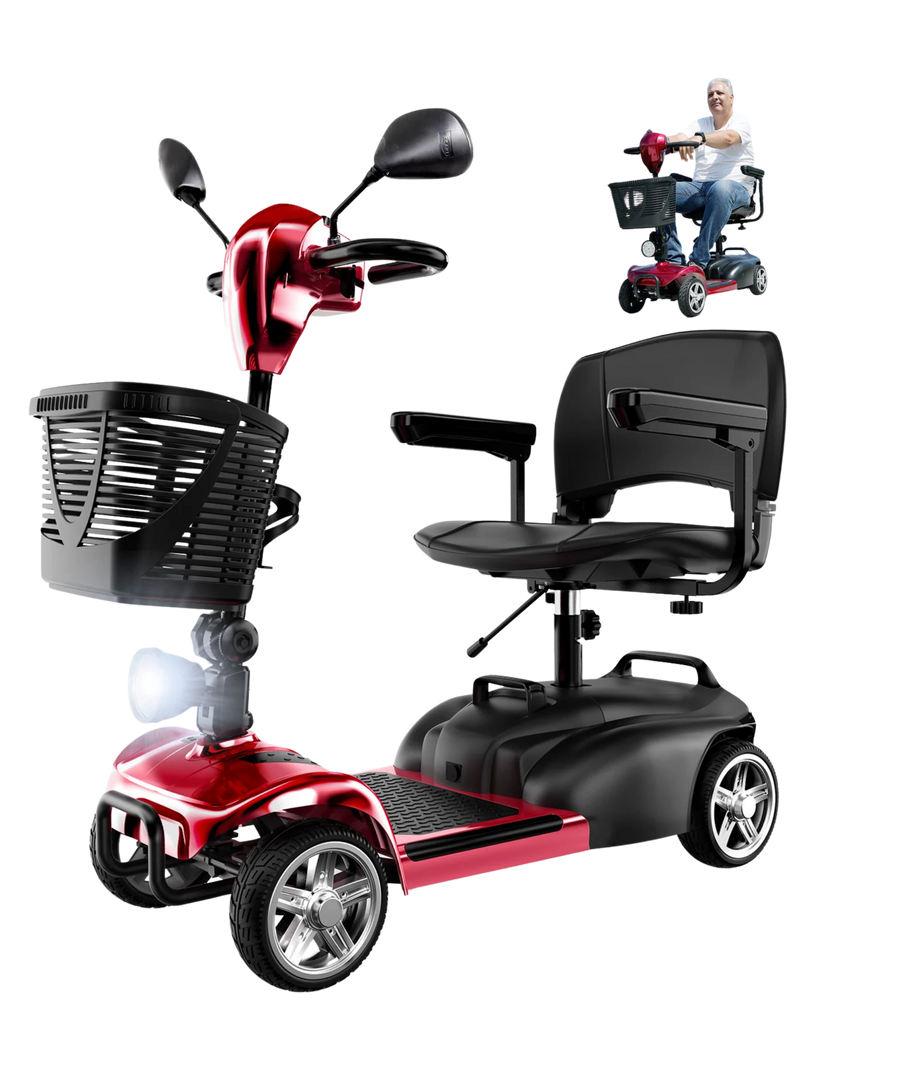
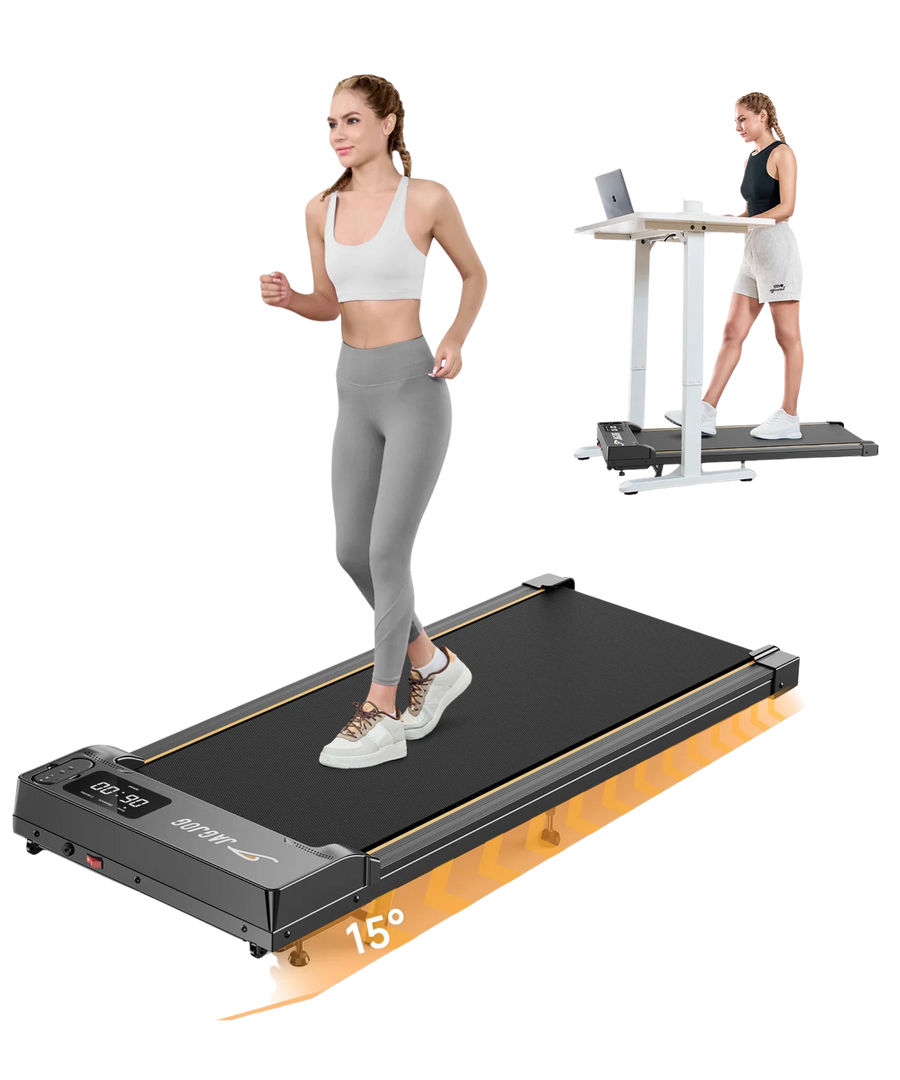

























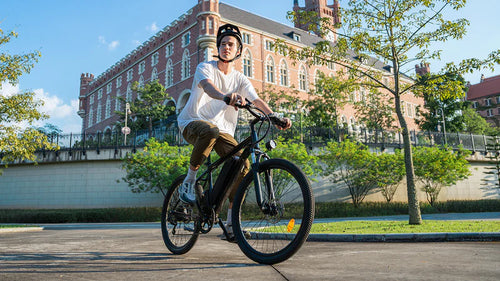
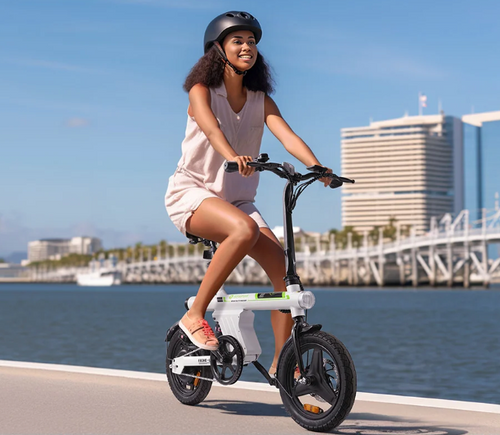


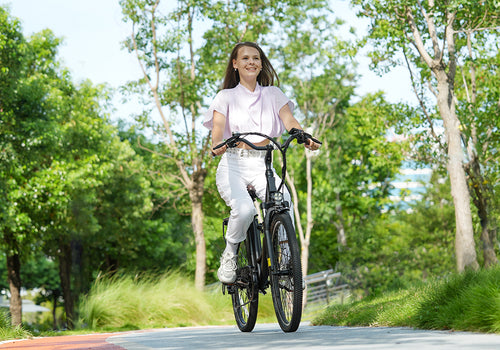
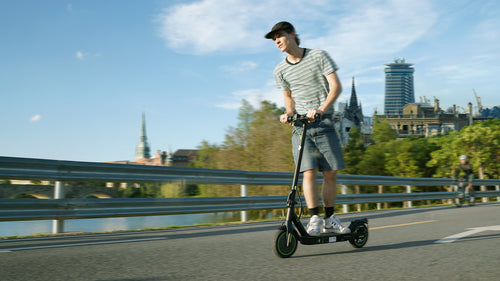


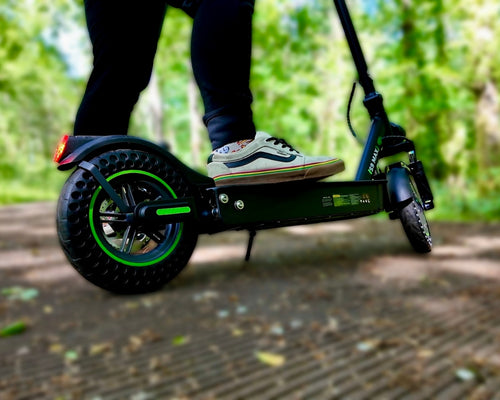
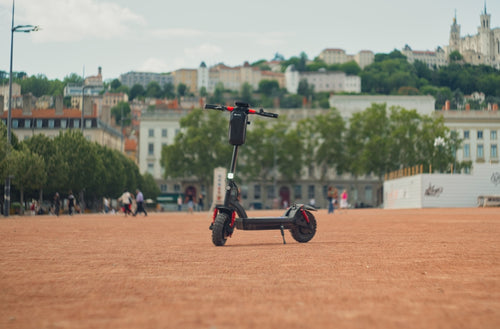
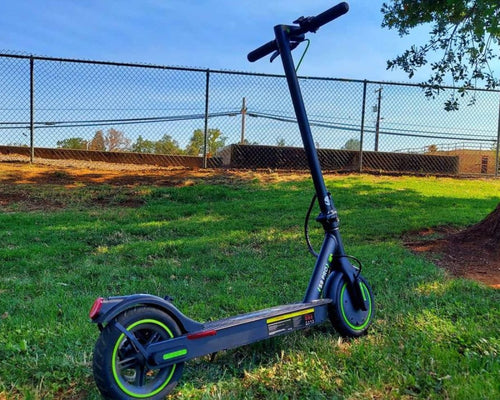





Leave a comment